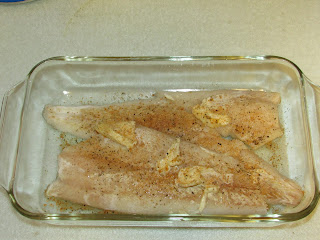A month ago today, I wrote a blogpost about how I prepare acorn squash in the wood cookstove. I still have a lot of squash to deal with, and I also have WAY TOO MANY CANS of sweetened condensed milk on hand (this I cannot explain because I'm not sure how it happened). Thus, I dug out a recipe that I devised when I lived in the little house--over twenty years ago now! Really, this is a recipe for pumpkin pie using canned pumpkin, but cooked acorn squash works just fine in it with a little tweaking.
Since canned pumpkin is sold by weight, I had to weigh the squash pulp to figure out how much twenty-nine ounces would be. I think a safe bet would be two and a half to three cups of UNSWEETENED squash pulp. Do take the time to run it through the blender so that you don't end up with stringy custard.
To the squash, add one and a half cans (22.5 oz total) of sweetened condensed milk.
You can do all sorts of fun things with the remaining half-can of this gooey stuff. I made hot fudge sauce out of it this time.
 |
| Squash puree and sweetened condensed milk. |
Into 3 TBLS of molasses, mix 2 tsp. of cinnamon, 1 tsp. of nutmeg, and 1 tsp. of ginger. Pour this molasses spice mixture into the squash/milk mixture and add a scant teaspoon of salt (omit the salt when using canned pumpkin) and 4 eggs.
 |
| All the ingredients in the custard waiting to be beaten together. |
Beat all of the custard ingredients until well blended.
 |
| The custard once it was completely mixed. |
The mixture will be pretty thin as you can see from the drips running down the side of the bowl in the picture below. Divide the mixture in half and pour each part into a 9" unbaked pie crust. For the piecrust recipe that I use, you can visit my post about apple pie here.
 |
| Squash pies ready to go into the oven. |
Place the pies in a hot oven (about 400ºF or more). Bake for ten to fifteen minutes at this high temperature, and then let your fire cool to a more moderate oven for another 35-45 minutes or until the custard is completely puffed up and does not appear to jiggle in the middle. Another reliable way to test this sort of pie is to insert a table knife into the custard half way between the edge and the center. The knife will come out completely clean if the pie is done.
When you bake in a woodburning cookstove, it is very important to know what signs foods exhibit when they are properly and thoroughly cooked rather than relying on a certain amount of time to have elapsed at a certain temperature. Actually, I feel like knowing these signs is important even when baking in a modern oven. I am absolutely convinced that if we were aware of how much the temperature in a modern oven truly fluctuates, we would be quite surprised.
Pardon my soapbox, but while I'm on the subject of modern ovens, I would also like to say that I find it quite amusing when I hear people complain about there being hot spots in wood cookstove ovens. In both our new gas oven (2012) and my parents' high-end electric oven (2011), even with the convection fan on, these modern ovens have hot spots. You can easily detect them in a pan of our Roadhouse Dinner Rolls or baking powder biscuits. This situation was the same in a commercial oven I used earlier this year, too. Uneven oven heating seems to me to just be a fact of life, and we cooks just have to learn to deal with it.
Sorry, but I feel better now.
 |
| The pies just after they had been put in the Margin Gem's oven. |
When the pies are done, remove them to a rack to cool. The custard will fall shortly after this, and they will look like you expect pumpkin pie to look.
Of course, a pie like this is not complete without some whipped cream on the top.
The tweaking that I mentioned earlier in the post is the addition of the salt. Originally, there was no salt in this recipe, but the squash really needed it. I consulted a can of pumpkin and discovered that while salt was not on the ingredient list, a serving of canned pumpkin provided 10% of your recommended daily allowance of sodium. I'm sure that this is why this recipe didn't taste as good to me as I would have liked.
I took one of the two pies shown above to some friends of ours, and when they added their own homemade whipped cream, they put additional salt in it because I told them that I thought the pie needed it. They all found the pie much tastier than I did, so if you make this recipe with squash, be sure to add that half teaspoon of salt.
I'm sure I could have used pureed acorn squash in the pumpkin pie recipe that I normally use, which you can find in this post from 2012. As I said, though, I was trying to use up an over-abundance of sweetened condensed milk. I hope you enjoy this one!







